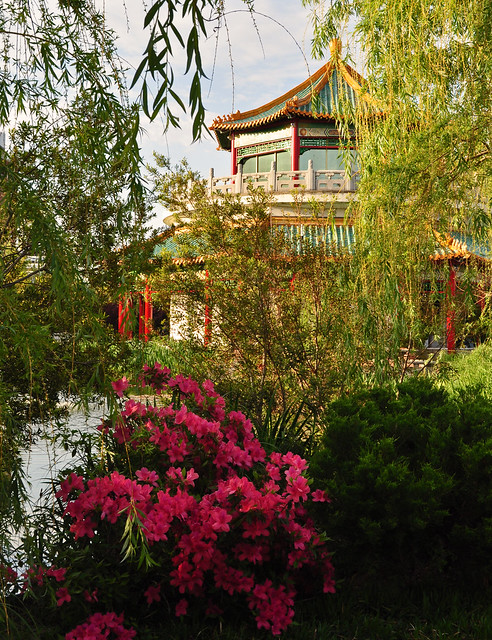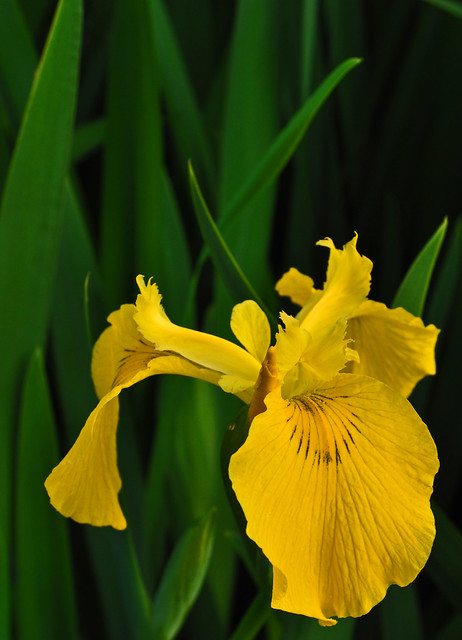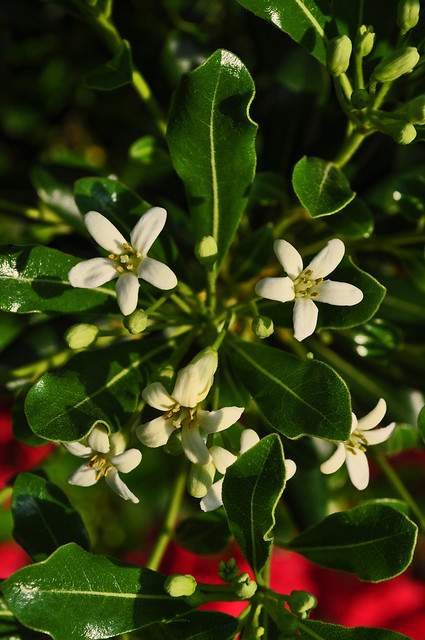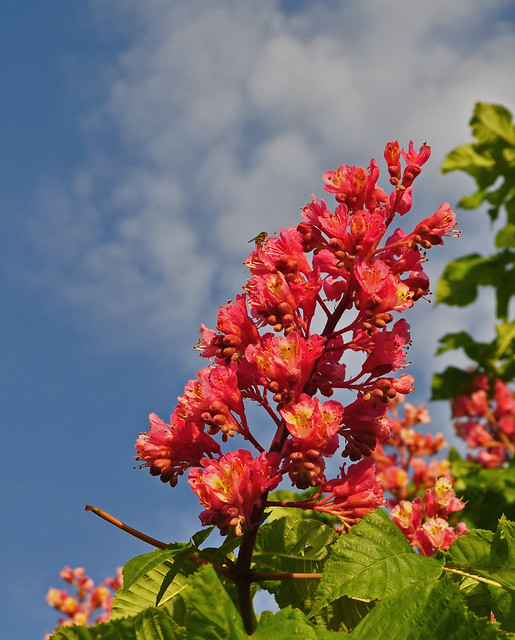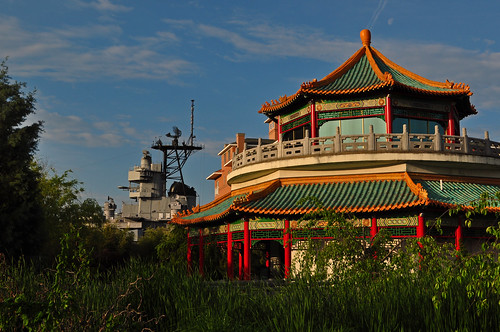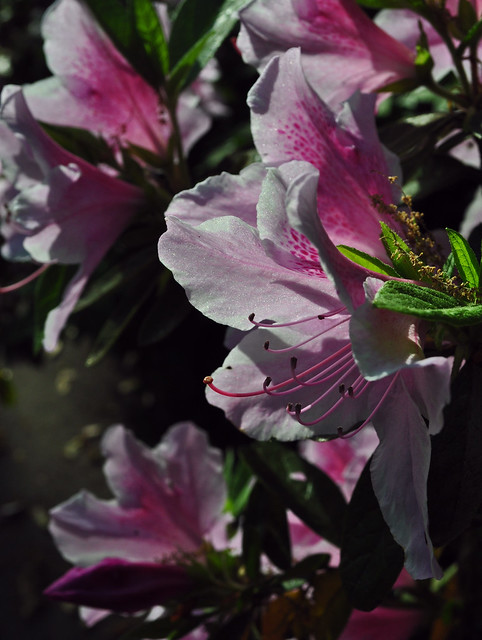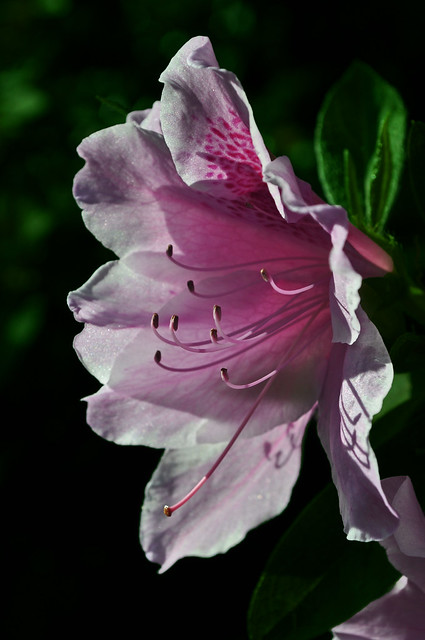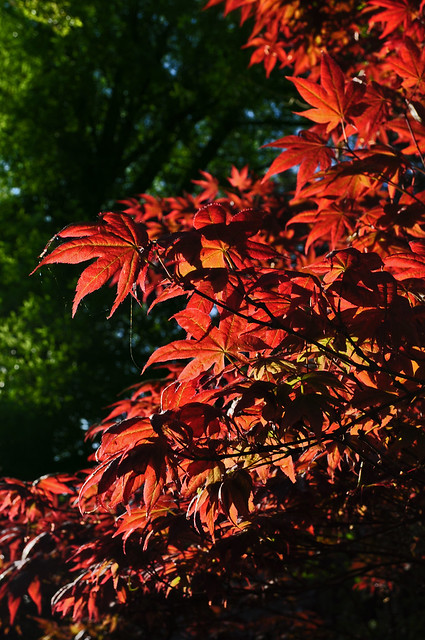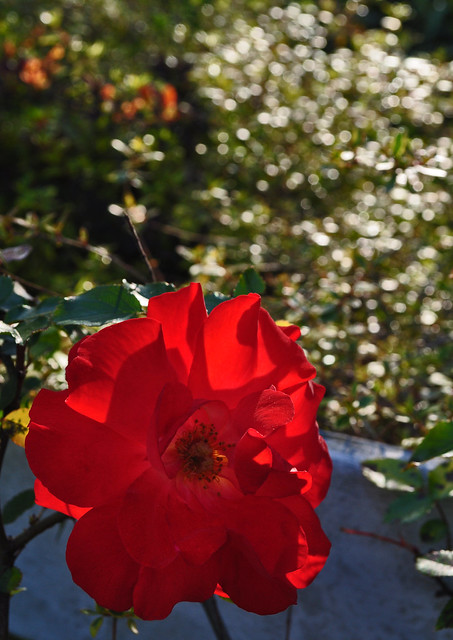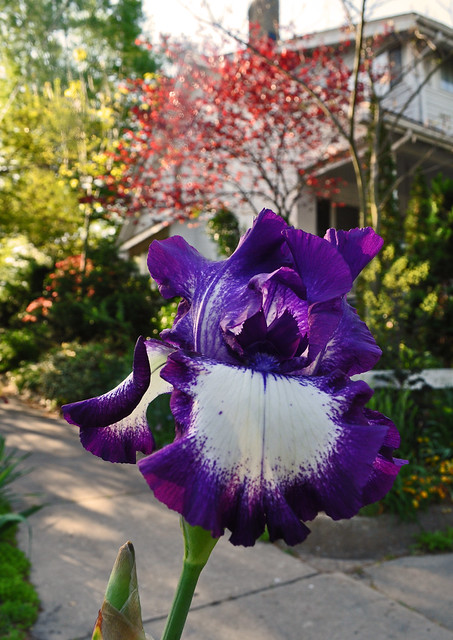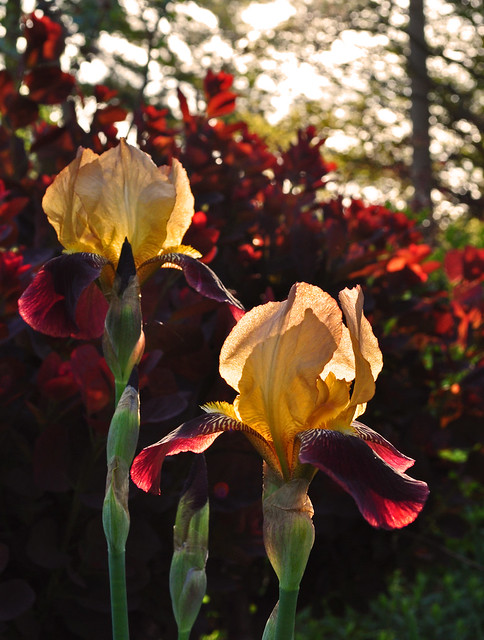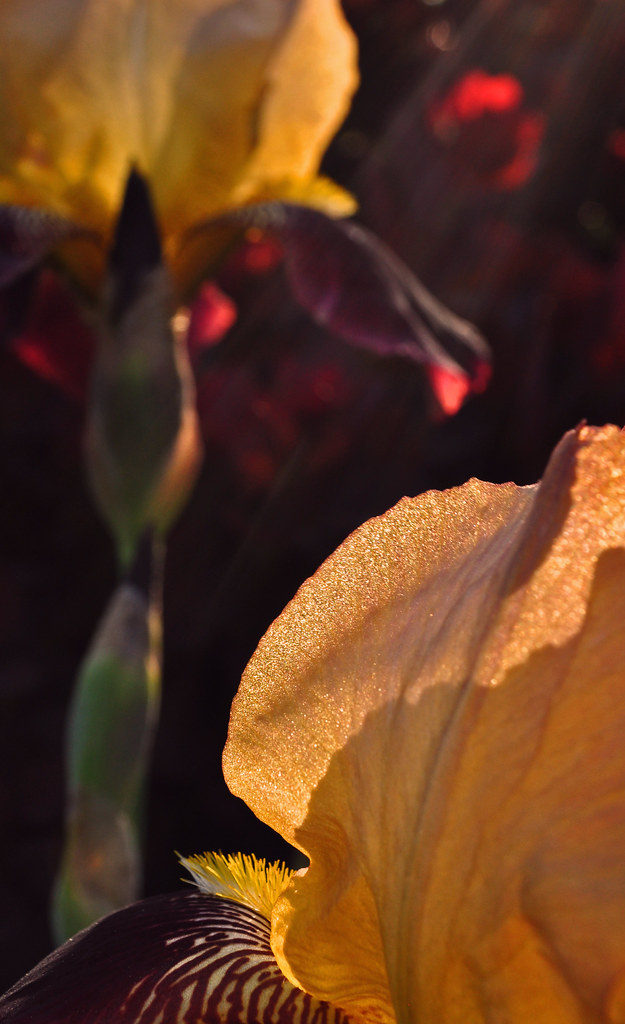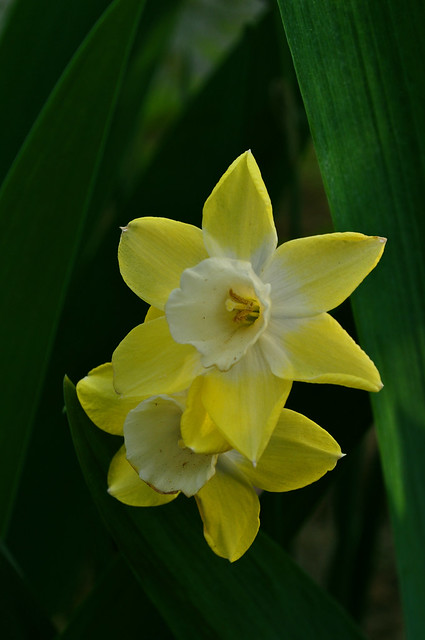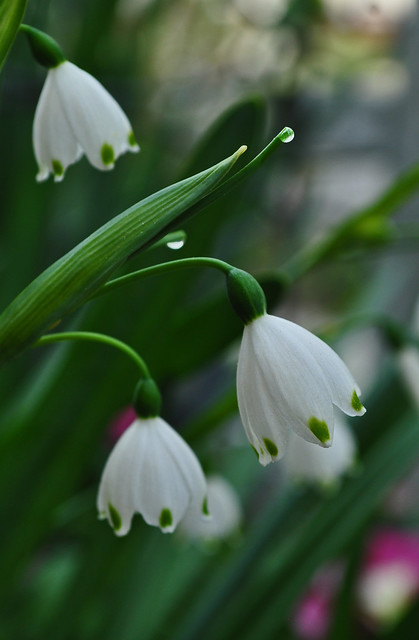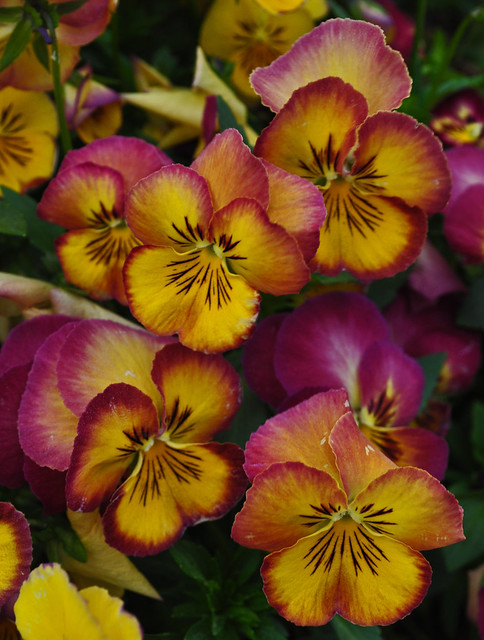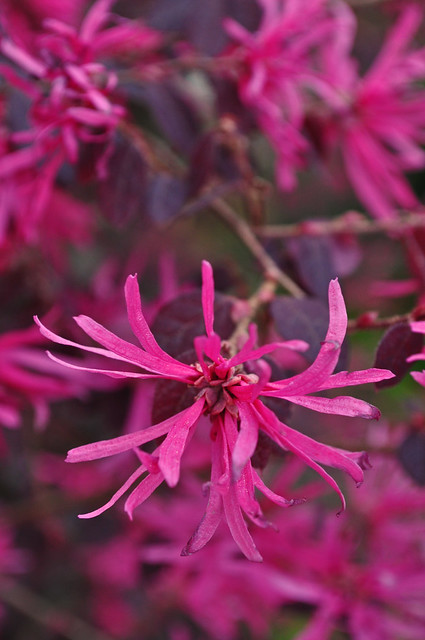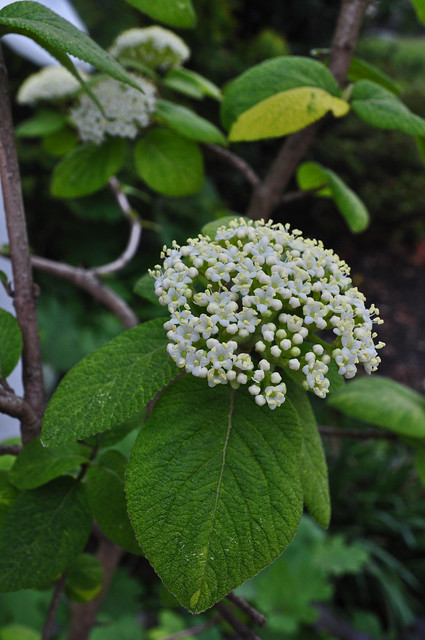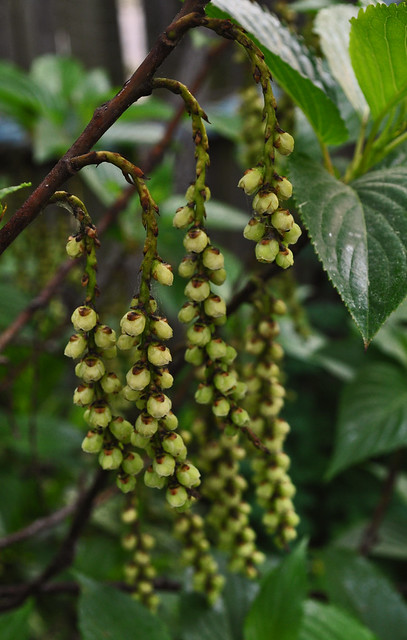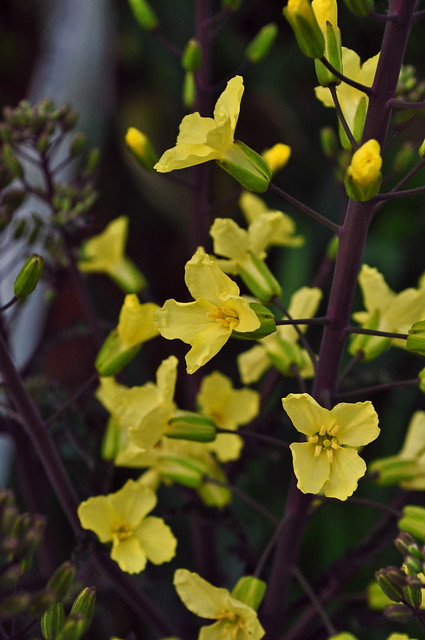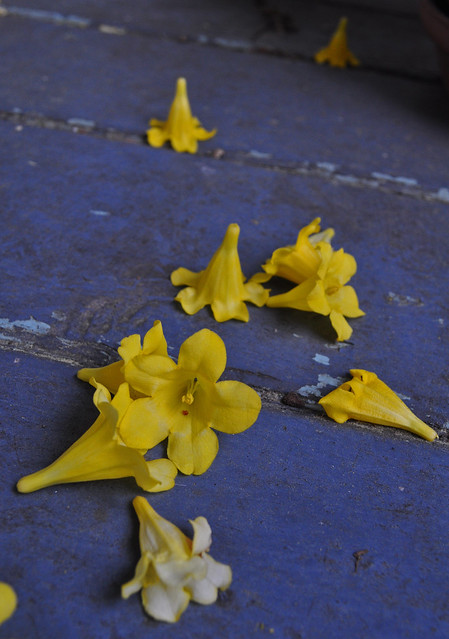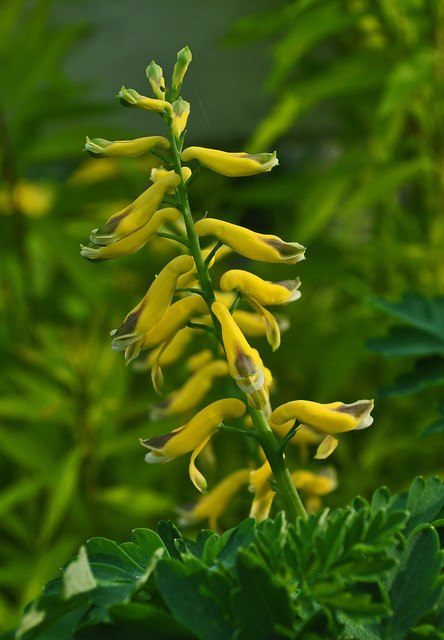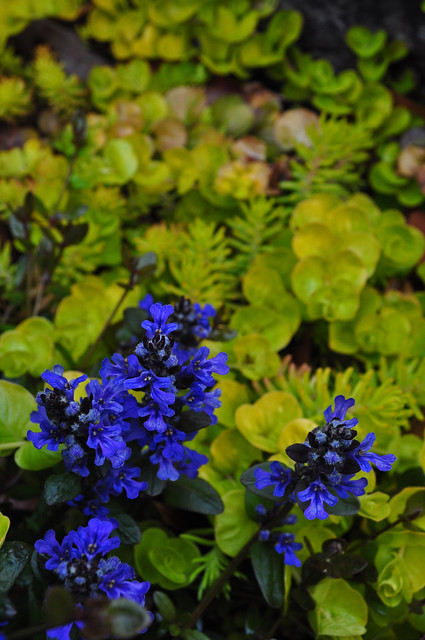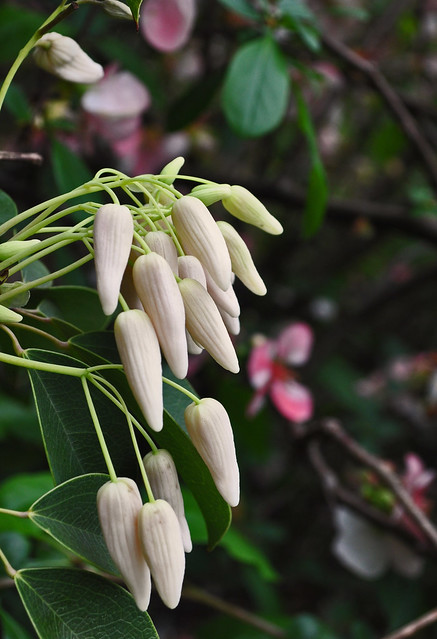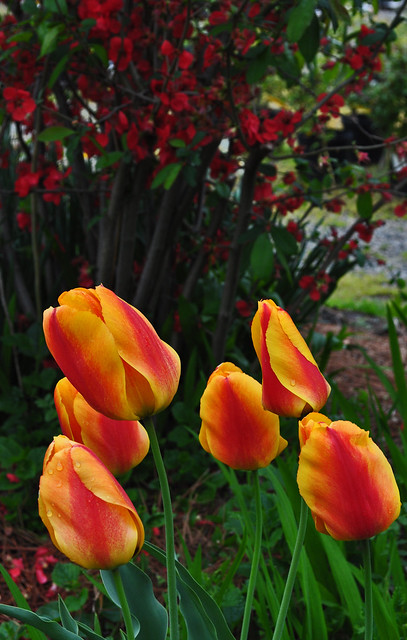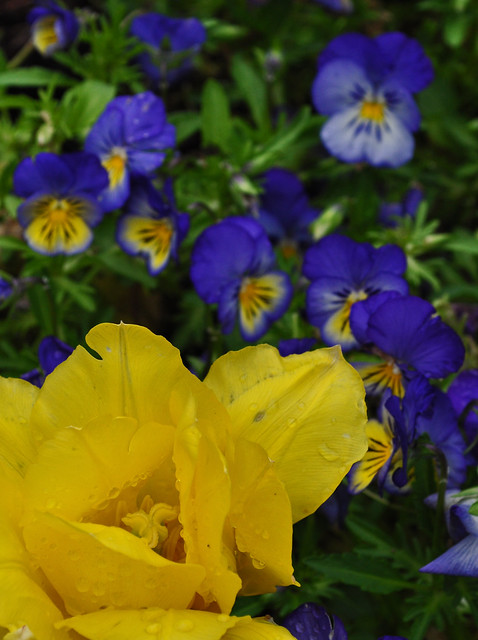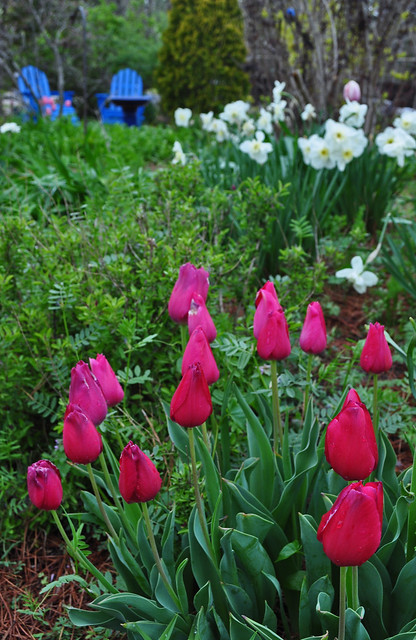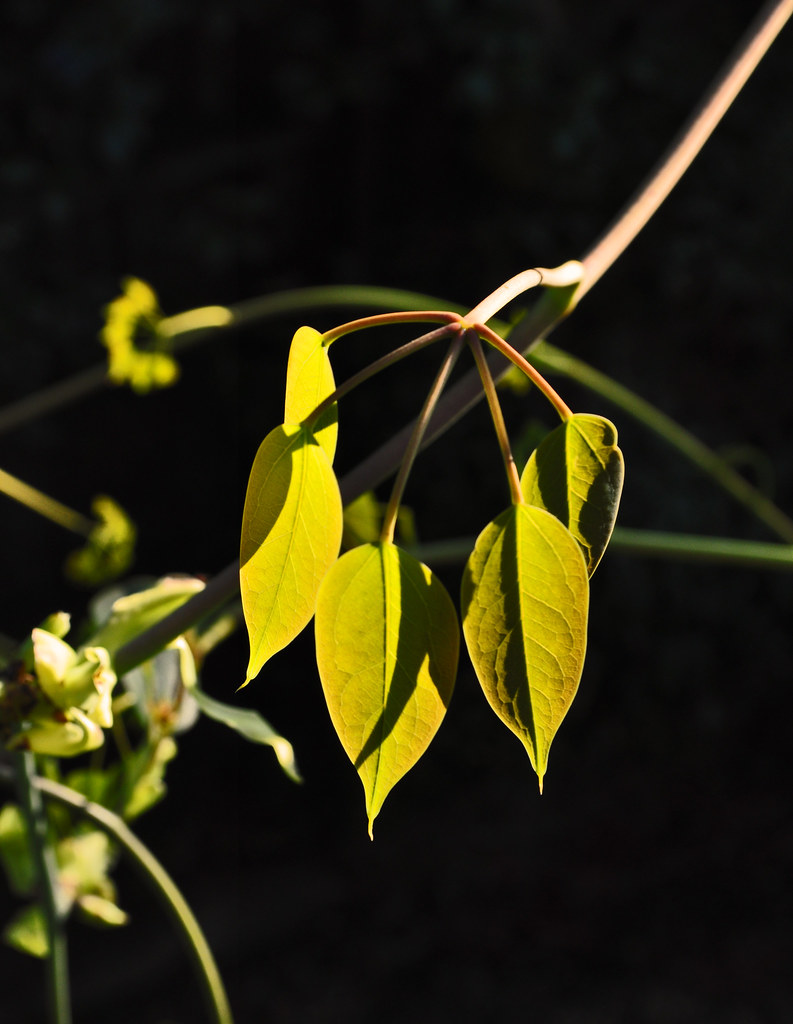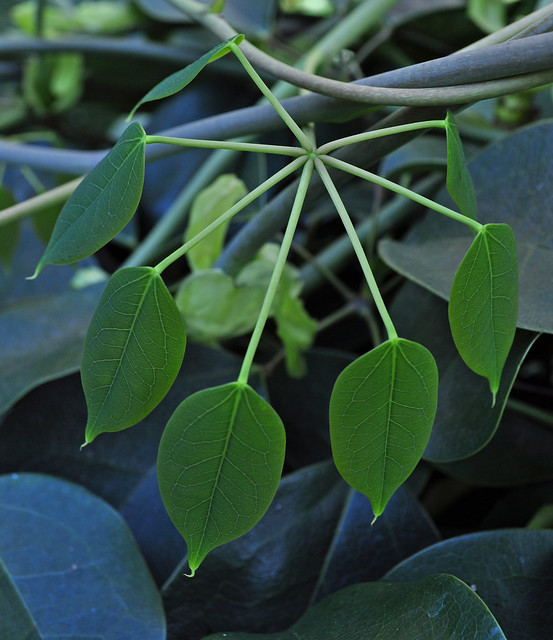Last Friday (Earth Day), waking up to a house full of sleeping people who wanted to remain so, I took an early morning bike ride, ending up downtown at The Pagoda. A previous visit was made here early in the life of this blog, but the blogger goes there fairly frequently. The Pagoda was a gift from Evergreen Shipping Lines to the city of Norfolk (thanks Chris for the correction), and an "Oriental-style" garden has been planted around it. When I first came to Norfolk in the late 70's, there was no pagoda or garden, rather this was the site of a giant, black, 500,000 gallon, molasses tank. The Pagoda was built on top of the tank's foundations and pillars, and today there is little evidence of its previous incarnation. The garden has some fairly diverse plantings centered around the Pagoda and its large koi pond. The morning I was there an osprey was flying overhead trying to spy breakfast in the pond.
Iris pseudacorus
Dianthus by the koi pond bridge
Pittosporum tobira
Aesculus pavia
Lest you forget where you are or what continent you're on, the nearby Battleship Wisconsin looms over the garden from the other side of the bamboo.
April 28, 2011
April 22, 2011
Morning Light
I have always been a morning person. My parents tell a story from my childhood of the two of them being woken up not so bright, yet very early to the sounds of me on my rocking horse (one of those with the loud creaky metal springs). Even now I usually stir before first light, but I like getting up to have the house to myself, enjoy a cup of coffee or take the dogs for a walk. During the spring, these early hours are often the only time I can get in my own garden before heading off to help others with theirs. Earlier this week the skies were clear, and as the sun rose out of the nearby Atlantic it created some amazing backlight, turning petal and leaf into pieces of glass.
Shortly after moving into our house, I removed the majority of what was previously planted. One area that has remained relatively untouched was a bank of Azaleas that includes one of my favorites, George Tabor (Rhododendron x 'George Tabor').
Another morning stunner is my $5 Japanese Maple (Acer palmatum). I once worked for a competitor of Lowes and Home Depot that did not survive a three-way battle for the home improvement market. The people I worked for were complete idiots when it came to knowing how to care for and sell plants. My boss at the time told be to put all the Japanese Maples in the dumpster since they were losing their leaves and we needed room for Christmas trees. I asked if I could have a few before I dumped them, but he could not give them to me outright, so I bought 3 for $5.
My first rose of the season (not counting the Lady Banks) opened this week. This is the shrub rose Caramba.
Perhaps the showiest flowers in my garden, are the Bearded Iris, and they began opening this week as well. The first one pictured was a pass-along plant given to me by a good friend, and it has travelled with us from a previous home, and I have also passed it along to other friends. I do not know the name, but it is very tall, vigorous and has a nice fragrance.
This little dwarf's colors always remind me of breakfast.
This dark purple Iris is a re-bloomer, and like most re-bloomers, I have found that they set their own schedules.
I'd like to tell fellow gardeners that the combination below was a deliberate attempt to apply Pamela Harper's practice of creating color echoes, but in reality it is a more like a happy accident between Iris and Royal Purple Smoketree (Continus coggygria 'Royal Purple'), but I've done nothing to discourage their relationship.
This is the same Iris in close-up so you can see the sun lighting it like a church window on Sunday morning. The Greek goddess Iris is most often associated with rainbows in mythology, but she also delivered messages between the gods and from the gods to us mortals, and right now I am all ears.
The picture above is my entry in Gardening Gone Wild's, Picture This Contest for April 2011. I was once told not to shoot in the direction of the sun, but I like what can happen when you do. Sometimes you get great backlighting, sometimes you get unusual color flares, and as in this case you get rays from above, maybe all the way from Mount Olympus.
Shortly after moving into our house, I removed the majority of what was previously planted. One area that has remained relatively untouched was a bank of Azaleas that includes one of my favorites, George Tabor (Rhododendron x 'George Tabor').
Another morning stunner is my $5 Japanese Maple (Acer palmatum). I once worked for a competitor of Lowes and Home Depot that did not survive a three-way battle for the home improvement market. The people I worked for were complete idiots when it came to knowing how to care for and sell plants. My boss at the time told be to put all the Japanese Maples in the dumpster since they were losing their leaves and we needed room for Christmas trees. I asked if I could have a few before I dumped them, but he could not give them to me outright, so I bought 3 for $5.
My first rose of the season (not counting the Lady Banks) opened this week. This is the shrub rose Caramba.
Perhaps the showiest flowers in my garden, are the Bearded Iris, and they began opening this week as well. The first one pictured was a pass-along plant given to me by a good friend, and it has travelled with us from a previous home, and I have also passed it along to other friends. I do not know the name, but it is very tall, vigorous and has a nice fragrance.
This little dwarf's colors always remind me of breakfast.
This dark purple Iris is a re-bloomer, and like most re-bloomers, I have found that they set their own schedules.
I'd like to tell fellow gardeners that the combination below was a deliberate attempt to apply Pamela Harper's practice of creating color echoes, but in reality it is a more like a happy accident between Iris and Royal Purple Smoketree (Continus coggygria 'Royal Purple'), but I've done nothing to discourage their relationship.
This is the same Iris in close-up so you can see the sun lighting it like a church window on Sunday morning. The Greek goddess Iris is most often associated with rainbows in mythology, but she also delivered messages between the gods and from the gods to us mortals, and right now I am all ears.
The picture above is my entry in Gardening Gone Wild's, Picture This Contest for April 2011. I was once told not to shoot in the direction of the sun, but I like what can happen when you do. Sometimes you get great backlighting, sometimes you get unusual color flares, and as in this case you get rays from above, maybe all the way from Mount Olympus.
April 15, 2011
Bloom Day - The Neglected Groaning Board
Recently I have only been able to catch brief glimpses of my garden, usually as I get in the car to head to work in the morning, or by the glow of porch light when I return home. This past Tuesday I had to cede defeat to the spring cold I fought all weekend and call in sick - too sick to garden, but not too sick to photograph the garden. It was good to see my garden in more than a passing glance, and good to see that it seemed to be thriving and full of blooms, despite the neglectful gardener.
Most of my Camellias are ready for a well-deserved rest and to build up some reserves for next year. However, Camellia japonica 'Cherries Jubilee' is now coming into full bloom.
Just when I think Narcissus season is about over, here pop up two varieties that never fail to surprise me. Forgive me for never bothering to record which cultivars they are.
Another bulb I don't know the full name of is this Leucojum. It came from the house where three generations my wife's family lived. It was sold to the local Lutheran church who told her they were going to house assistant pastors in it, but promptly knocked it down within days of closing. I am personally renaming the bulb Leucojum 'Maury Avenue'.
The Viola x 'Radiance Red' are partying like it's 1999, and considering what will happen to them in another month or so, I don't blame them for going out big.
Local gardeners and especially local landscapers have fallen in love Loropetalum, and it would be hard to miss all the color they add to local gardens, including my own. This one is Loropetalum chinensis var. rubrum 'Pizazz'.
I also have a couple of Viburnums blooming. The first picture is of a Chinese Snowball Viburnum (Viburnum macrocephalum) growing in a pot by the back gate, and the second is Viburnum lantana 'Variegata' growing a pot by the front steps.
There are many other things blooming in the garden, but we are going to end this post with a few of the yellows.
Stachyurus praecox ''Mitsuzaki'
Brassica oleracea 'Redbor' (Redbor Kale)
Gelsemium sempervirens (Carolina Jessamine)
Corydalis heterocarpa
Euphorbia polychroma
If you would like to catch a glimpse of other people's gardens, then please visit Carol of May Dreams Garden as she is the hostess of Garden Bloggers Bloom Day - a world-wide phenomenon held on the 15th of each month.
Most of my Camellias are ready for a well-deserved rest and to build up some reserves for next year. However, Camellia japonica 'Cherries Jubilee' is now coming into full bloom.
Just when I think Narcissus season is about over, here pop up two varieties that never fail to surprise me. Forgive me for never bothering to record which cultivars they are.
Another bulb I don't know the full name of is this Leucojum. It came from the house where three generations my wife's family lived. It was sold to the local Lutheran church who told her they were going to house assistant pastors in it, but promptly knocked it down within days of closing. I am personally renaming the bulb Leucojum 'Maury Avenue'.
The Viola x 'Radiance Red' are partying like it's 1999, and considering what will happen to them in another month or so, I don't blame them for going out big.
Local gardeners and especially local landscapers have fallen in love Loropetalum, and it would be hard to miss all the color they add to local gardens, including my own. This one is Loropetalum chinensis var. rubrum 'Pizazz'.
I also have a couple of Viburnums blooming. The first picture is of a Chinese Snowball Viburnum (Viburnum macrocephalum) growing in a pot by the back gate, and the second is Viburnum lantana 'Variegata' growing a pot by the front steps.
There are many other things blooming in the garden, but we are going to end this post with a few of the yellows.
Stachyurus praecox ''Mitsuzaki'
Brassica oleracea 'Redbor' (Redbor Kale)
Gelsemium sempervirens (Carolina Jessamine)
Corydalis heterocarpa
Euphorbia polychroma
If you would like to catch a glimpse of other people's gardens, then please visit Carol of May Dreams Garden as she is the hostess of Garden Bloggers Bloom Day - a world-wide phenomenon held on the 15th of each month.
April 10, 2011
All Work and No Play
I am only in the second week of my annual spring work schedule with another six weeks to go, but it is already wearisome. With only one day off, I have not had much time for my own garden or for keeping up with the blogging world. It's a common complaint of mine this time of year, but at least I am fortunate that my vocation and my avocation are the same. So in that spirit, here are a few things I saw at work today.
This is a nice pairing of Chocolate Chip Ajuga (Ajuga reptans 'Chocolate Chip'), which is in full bloom now, planted next to a mixed bed of Golden Creeping Jenny (Lysimachia nummularia 'Aurea') and Angelina Sedum (Sedum rupestre 'Angelina').
My last blog post was about Stauntonia hexaphylla, and I had to use a Wikipedia Commons picture to show the flowers. If I had been more patient, I could have used the vine planted at work as an example.
The rest of the photos are of Tulips, a plant the begs to be photographed. Here in the South they are generally considered annuals, as we normally only get one good year out of them. But we have found that some varieties are better at returning than others, especially if they are planted 10" deep, no matter what the package says. Despite their reputation, the variety in the first picture has bloomed for the past 6 to 8 years.
Ripe peaches anyone?
How about this accidental pairing with Loropetalum?
The Pansy is Ultima Morpho and the Tulip is Monte Cristo.
We are in the process of redoing one of the gardens at work in memory of our friend JoEllen who died in January. We are doing some serious editing and will add things as spring progresses. It most likely will not be complete until Daylily season in June, and I am sure I will do a post on it then. In the meanwhile cerise Tulips planted several years ago look good and will remain.
This is a nice pairing of Chocolate Chip Ajuga (Ajuga reptans 'Chocolate Chip'), which is in full bloom now, planted next to a mixed bed of Golden Creeping Jenny (Lysimachia nummularia 'Aurea') and Angelina Sedum (Sedum rupestre 'Angelina').
My last blog post was about Stauntonia hexaphylla, and I had to use a Wikipedia Commons picture to show the flowers. If I had been more patient, I could have used the vine planted at work as an example.
The rest of the photos are of Tulips, a plant the begs to be photographed. Here in the South they are generally considered annuals, as we normally only get one good year out of them. But we have found that some varieties are better at returning than others, especially if they are planted 10" deep, no matter what the package says. Despite their reputation, the variety in the first picture has bloomed for the past 6 to 8 years.
Ripe peaches anyone?
How about this accidental pairing with Loropetalum?
The Pansy is Ultima Morpho and the Tulip is Monte Cristo.
We are in the process of redoing one of the gardens at work in memory of our friend JoEllen who died in January. We are doing some serious editing and will add things as spring progresses. It most likely will not be complete until Daylily season in June, and I am sure I will do a post on it then. In the meanwhile cerise Tulips planted several years ago look good and will remain.
April 1, 2011
Stauntonia hexaphylla
In the blur of color that is spring, it is easy to be blinded by pink, yellow and white. If a gardener can see beyond these distractions, then spring's other charms become more apparent. Stauntonia hexaphylla has interesting evergreen foliage no matter what time of year and reminds me of tropical Schefflera, or of something else that will not grow here. However, when the new growth emerges in March it is a distinct amber color before it darkens to a cool blue-green. Stauntonia is listed as growing 20-30', but I saw one at Taylor's Nursery in Raleigh that had nearly reached the top of a very tall radio antenna tower. It is also listed as preferring full sun to light shade, but mine only gets winter sun being shaded by a large oak the rest of the year, and it has apparently not been slowed. I regularly have to unwrap or trim the vine from patio furniture. It is listed as hardy in USDA zones 7 to 8, and it has shown a remarkable degree of drought tolerance as well.
Though I grow it for it's foliage, it also has a flower, but mine has never bloomed. I think this may have more to do with the age of mine than the shade, because I have seen a specimen in the display garden at work flower in almost total shade. Flowers normally occur later in the spring and their delicate appearance and white pastel-purple color seem in contrast to the the vine's vigorous, near thug-like nature. I have never seen fruit on any local plant, but it is listed as having a red-purple fruit that resembles a sausage. Pictures remind me of Akebia quinata fruit, which is in the same family (Lardizabalaceae) as Stauntonia. In Japan, where this plant is native, the fruit is a prized delicacy.
 |
| (photo from Wikipedia Commons) |
Subscribe to:
Posts (Atom)
